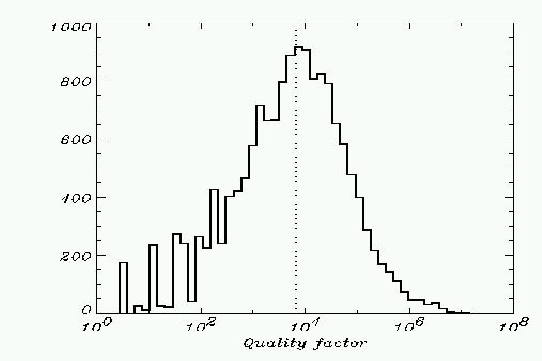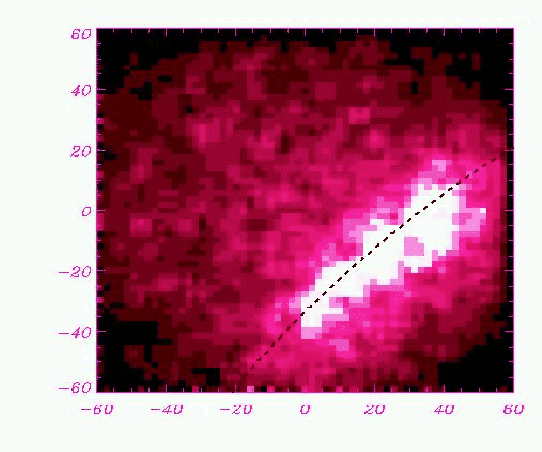



Next: On-ground tracks reconstruction
Up: On-board tracks reconstruction
Previous: Simulation Results
Contents
The algorithm has been applied to a set of simulated photons with direction distribution and energy spectra that reproduce the albedo photons features, when the Earth is partially in the AGILE field of view.
The arrival directions of photons are reconstructed in order to discriminate the gamma rays produced by earth atmosphere, which are one of most intense source of noise events at this level of triggers.
Figure 4.7 shows the angular separations ( ) between the derived photon direction and the simulated Earth-center direction.
The maximum of distribution correspond to the atmospheric limb which in this simulation is seen at 66 degree of distance from Earth center (corresponding to an AGILE altitude of 600 Km).
A cut of the events with
) between the derived photon direction and the simulated Earth-center direction.
The maximum of distribution correspond to the atmospheric limb which in this simulation is seen at 66 degree of distance from Earth center (corresponding to an AGILE altitude of 600 Km).
A cut of the events with  less than
less than
 can eliminate about 80% of the albedo photons, allowing to sent the remaining events on ground, where they will be realalized with more raffinate algorithms.
can eliminate about 80% of the albedo photons, allowing to sent the remaining events on ground, where they will be realalized with more raffinate algorithms.
Figure 4.7:
Angular distances between the Earth's center direction and the photons reconstructed directions.
 |
The Kalmaex algorithm is also able to reject part of the background due to charged particles.
The algorithm in fact produces also a quality factor of reconstructed events called
 .
If the reconstruction process is applied to spurious events due to charged particles the distribution of
.
If the reconstruction process is applied to spurious events due to charged particles the distribution of
 is very different from that obtained from gamma-ray photons.
A cut of events based on the value of
is very different from that obtained from gamma-ray photons.
A cut of events based on the value of
 can therefore reduce the particle background by about 70%.
can therefore reduce the particle background by about 70%.
Figure 4.8:
Quality factor ( ) of background events. The dotted line represent a typical value for a background cut based on this parameter.
) of background events. The dotted line represent a typical value for a background cut based on this parameter.
 |
Figure 4.9:
Reconstructed image of the Earth limb in the AGILE field of view. The coordinates are given in degrees, the on-axis direction correspond to 0,0 [Giuliani et al., 2004]
 |




Next: On-ground tracks reconstruction
Up: On-board tracks reconstruction
Previous: Simulation Results
Contents
Andrea Giuliani
2005-01-21



